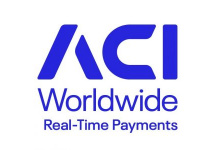The State of the Payment Industry: the Future of Payment Cards Is Biometric

- Vince Graziani, CEO at IDEX Biometrics
- 21.12.2021 11:45 am #payment
The payment industry is going through a rapid period of technological transformation. From challenger banks to AI-assisted savings apps, we've already seen technology enhance the payment sector in many areas. Now, the trusted payment card is the next everyday item set to get a technology update.
Experts at Visa predict global payment volumes will grow by 12% by 2023, with more consumers embracing contactless payments. But with this rise in payment convenience comes a concern around security.
Despite chip and PIN authentication, the European Central Bank estimates card fraud committed at POS terminals has increased by 2.2% in recent years. Overall, 3.6 cents in every €100 spent in Europe using credit and debit cards is being lost to fraud, a staggering €1.87 billion. As more consumers embrace contactless payment, those levels of card-present fraud are set to rise even further.
Furthermore, the increase in contactless payment limits adds additional risk. Strong customer authentication (SCA) will become a requirement of the EU Revised Directive on Payment Services (PSD2) for payment service providers, coming into effect in 2022, after an extension due to the pandemic.
With further regulation around the corner, there’s an increasing demand for more secure forms of payment. Fingerprint biometric authentication is one of the significant technological developments to address this concern. The innovative payment technology is currently being commercialized in various countries and the demand from consumers is high. The industry has recently reached an inflection point towards mass production, propelled by Visa and Mastercard recently certifying fingerprint sensor technology for payment cards.
With such momentum in play, 2022 will likely be the year when biometric payment cards go mainstream. We already see an acceleration in their uptake in France with BNP Paribas launching their own biometric card in 2021, with other countries including Norway and Saudi Arabia also lining up. Therefore it’s only a matter of time until we see further global uptake.
It's time for banks and payment card providers to embrace biometric payment cards now to match that demand. The payment technology presents a clear benefit for payment providers to retain and attract new customers and gain a competitive advantage.
The biometric advantage
One of the major benefits of biometric payment card technology is the added security it provides to consumers at the point of sale. Fingerprint biometric payment cards use your fingerprint to authenticate transactions. They work like a normal dual interface contactless card with the transaction taking place when the owner's fingerprint is placed on the on-card sensor. The same sensor solution technology is also leveraged for digital wallets and access passes.
We’ve all become used to biometric technology in some capacity, using fingerprint or facial recognition for years to open mobile devices and make purchases. Now, consumers are willing to embrace them in their payment cards. According to research from IDEMIA, over 90% of consumers believe biometric payment methods are a fast and convenient way to pay, while 86% deem them more secure.
With these kinds of figures, we are seeing growing demand for biometric payments. In fact, 81% of global consumers are ready to use their fingerprint instead of a PIN code when paying in-store. According to IDEX Biometrics research, close to 75% of consumers would like a biometric payment card within 12 months, and more than 60% would pay for one, either separately or as part of their monthly or annual card fee.
But it’s not just payment cards that can embrace contactless biometric technology. Digital wallets, too, can support enhanced authentication. They have had a big year in growth. New data from the latest FIS PACE research finds that 32% of mobile wallet users now have three or more mobile payment wallets—like Apple Pay, Google Pay and others—downloaded on their smartphones.
While the digital wallet market’s transaction volume is expected to grow to 274.4 billion in 2021, there is undoubtedly a need for further authentication methods. Having a physical payment method, such as a card, rather than a digital wallet, is still popular with many consumers, who feel safer when authentication is available through an off-cloud biometric card. IDEX research has also shown that almost two-thirds of consumers feel more secure using their debit card as payment. For those shoppers, biometric payment cards give the option to combine secure technology with a physical payment method for added security.
How biometric payment cards support consumers, banks and payment providers all at once
To make the most of biometric technology, we must also understand how it works and why it has become so popular. The biometric data is encrypted and securely stored inside the card which means the data never leaves the card and therefore cannot be hacked, recreated, or breached. By adding fingerprint biometric authentication as a layer of security only the cardholder can use the card. The chain of trust that fingerprint biometrics offers can be implemented to provide businesses and consumers with a far greater level of confidence in keeping payments secure and off-cloud.
Through biometric markers, such as fingerprints, irises, face scans or voice recognition, it is much harder for a scammer to replicate your ID or payment authorisation method, and therefore reduces the possibility of payment card theft and fraud.
Therefore biometric payment technology is highly significant for businesses and consumers. The demand is already there. Now payment providers need to provide consumers with a service that makes transactions as smooth and as painless as possible, with a focus on both convenience and security.
Early adoption of biometric cards will be critical for banks and payment providers who want to keep pace with the changing state of the payment industry and respond to the demands of consumers. After all, ABI Research predicts there will be up to 2.5 million biometric payment cards issued in the next few years.
As the state of the industry advances, the future of the payment industry is becoming biometric. Not only do these payment authentication methods provide another level of security that is harder to crack, but they also provide a fast and convenient way to pay.
Payment providers and banks who fail to acknowledge their benefits and popularity will ultimately find themselves falling behind their competitors – it’s time to embrace the future of payment today.


























